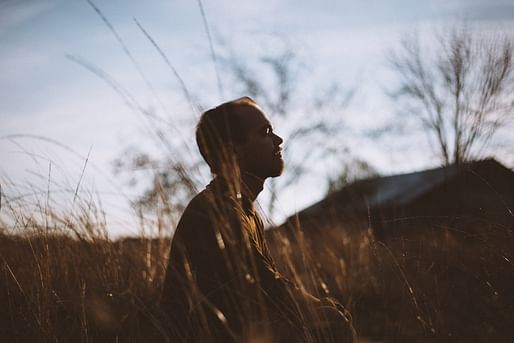anchor
How can mindfulness make you a better designer?

As designers, we often are presented with an overwhelming amount of data to accompany a design problem. There are the client desires, the code constraints, zoning, the desires of the design team, materials, structural systems, and the list goes on. Sometimes, we can feel bombarded or crippled from receiving too much info. Where do I start? We might think to ourselves.
Nadia Surtees, a design researcher at IDEO makes a case for taking a mindfulness approach in our design thinking. "Dr. Jon Kabat-Zinn, one of the fathers of modern mindfulness, describes the practice as 'paying attention on purpose, in the present moment, and non-judgmentally,'" she writes. She goes on to list 5 ways she and her colleagues at IDEO go about using mindfulness to tackle tough projects:
- "Adopt a beginner's mindset." According to Surtees, a beginner's mindset means "starting fresh, assuming nothing, and living the question." It can be tempting to assume we have the answer to something or to draw on our previous experience, but when approach something with a blank slate we allow ourselves to organically move through the creative process.
- "Practice radical acceptance." Surtees says that having the "willingness to sit with uncomfortable truths and see a problem from all angles before jumping in to solve them" is a sure step to design a better solution. It comes "from a place of non-resistance."
- "Drop your ego." We often want to be "right," Surtees explains, but releasing that tendency can open us up to a slew of new possibilities.
- "Listen deeply." As designers our primary focus should be the people we are designing for. Surtees expresses this in highlighting IDEO's "human-centered, interdisciplinary design approach" to projects, which is grounded in empathy skills learned by the entire design team.
- "Meditate in order to create." Surtees dives into the myth that many believe about creative people, that we "always wake up feeling compelled to create." She acknowledges that outside pressures and internal insecurities can sometimes block this creative energy. One of her methods for dealing with that blockage is through focusing on her breathing and acknowledging these setbacks. "Only when you're clear headed can you make," she says.
Similar articles on Archinect that may interest you...

All 7 Comments
Do TM.
or just drink more coffee and drop the new-agegy woo.
On reading that, the bong practically lights itself.
Generally good ideas wrapped in a shiny-marketing-trend package.
Mindfulness is not "new-agegy woo" or a "shiny-marketing-trend". So ignorant.
It definitely helps, if you commit. It's why i say i "practice" TM, sometimes my practice is better than others...
Paul, my woo comments relates primarily to the energy blockage (samskaras) section in part 5. The original article has its fair share of woo which is not covered in this archinect article. Disagree if you will, but it's hard to take something seriously when its foundation relies on the reuse of popular religious terms with a marketing twist. So no ignorance from me, just a well oiled and healthy skeptical spidey sense.
It can be tempting to assume we have the answer to something or to draw on our previous experience, but when approach something with a blank slate we allow ourselves to organically move through the creative process.
Monern architects must always and forever reinvent the wheel. It would be nice if they made it round once in a while.
"Monern" architects? You mean architects that are alive and practicing? Because reinvention of the wheel is hardly the sole property of Modernists.
Mindfulness can help anyone. It's like meditation or prayer if your religious. Empty your head a bit so it will work smoother.
Block this user
Are you sure you want to block this user and hide all related comments throughout the site?
Archinect
This is your first comment on Archinect. Your comment will be visible once approved.